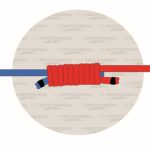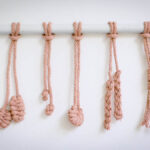The Australian Plait Knot is a durable knot designed for creating a strong, braided connection between two fishing lines. This knot is especially popular among anglers who need a dependable connection for heavy-duty fishing scenarios. Its interwoven structure provides remarkable strength and stability, and while the plait requires precision, the knot becomes manageable with practice.
Australian Plait Knot: Quick Tying Guide
To tie an Australian Plait Knot, start forming a loop by doubling up the string or rope that will be used to create the braid. Next, twist the loop and thread the tag end through the loop. Then begin wrapping the tag that is at the end around the main strands toward the back of the braid and bring it back up the middle of the two strands.
Ensure the braid is very tight. There will be three strands: two hanging tag ends and the loop. Twist the loop and thread the longest tag end through the loop to braid the two lines together.
The shorter tag end should remain stagnant as the braid is moving away from it. Continue twisting the loop and pushing the long tag end into the loop each time. Make sure each twist is even to create a secure braid.
Repeat the process with the other side of the loop, ensuring that each time the string or rope makes a lap through the loop, the stagnant line is pulled tightly. The ultimate length of the plait will vary on preference and need.
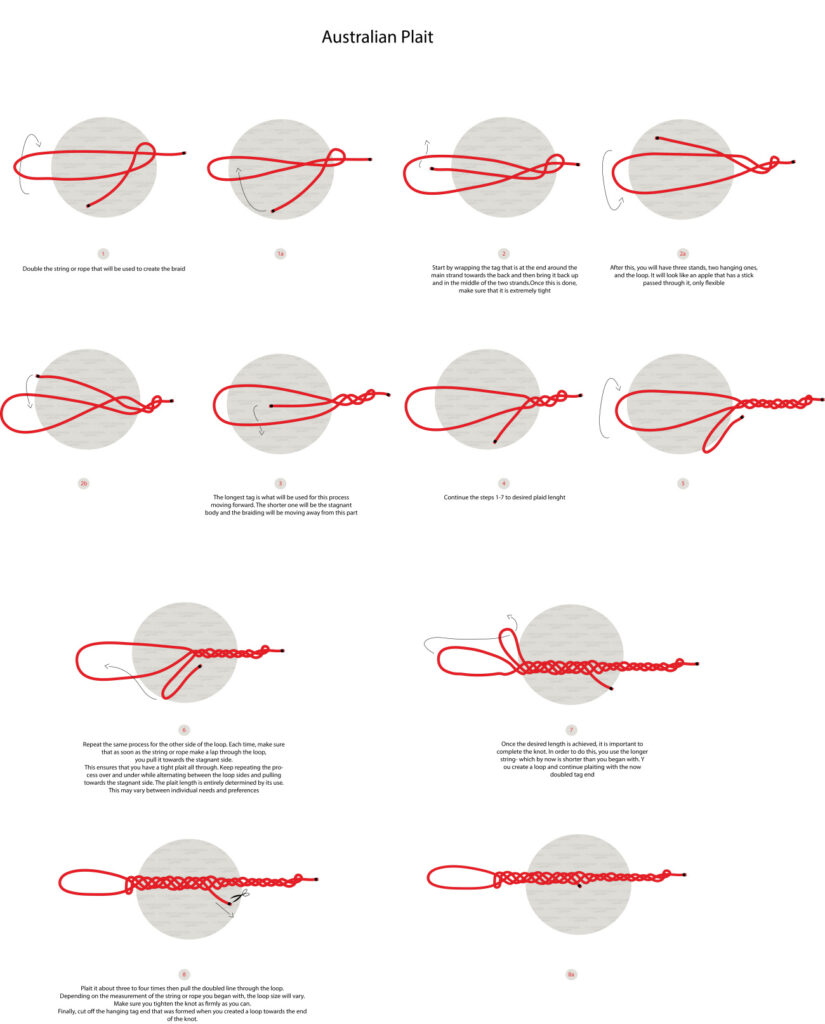
Once the braided section reaches the desired length, pull the doubled line through the loop and secure the knot, by wrapping the loose ends of the lines around the base of the loop several times, pulling them tightly to hold everything in place. Finally, ensure the knot is snug by pulling firmly on all ends, and trim any excess line for a clean finish.
Why Use an Australian Plait Knot?
The Australian Plait Knot is ideal for anglers who need a robust and flexible knot for fishing. Its braided design offers exceptional strength, making it well-suited for connecting fishing lines that need to withstand heavy loads. Though it requires a bit more effort to tie than simpler knots, its reliability and durability make it a preferred choice for many fishing enthusiasts.
Knots Similar to the Australian Plait Knot
Bimini Twist: Known for its high breaking strength, the Bimini Twist creates a double line that’s ideal for big-game fishing.
Spider Hitch: Similar to the Bimini Twist but simpler to tie, it also forms a strong double line for increased strength.
Albright Knot: This knot connects lines of different diameters securely, making it useful for leader-to-line connections.
Improved Clinch Knot: A straightforward knot for attaching a line to a hook or swivel, it’s versatile and easy to learn.
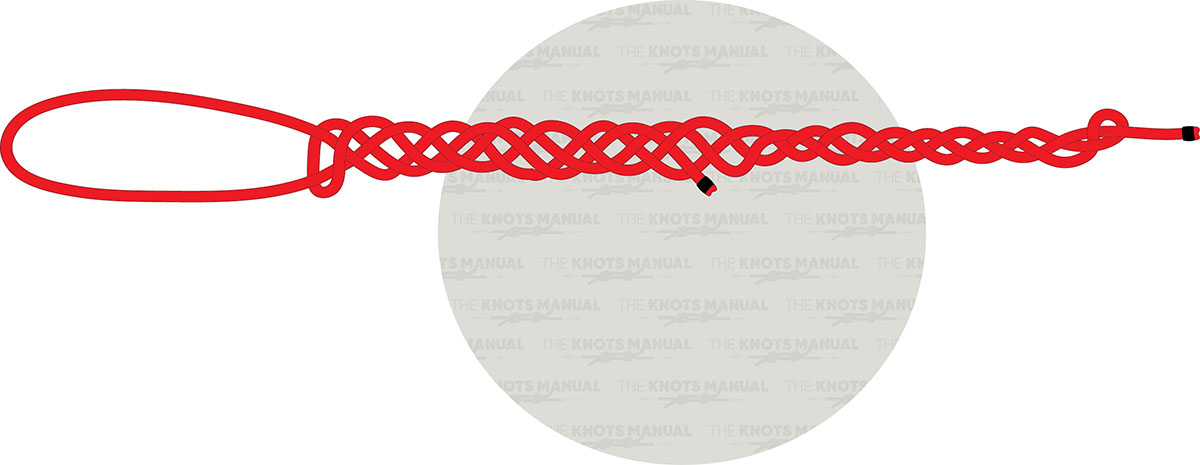
Step 1:
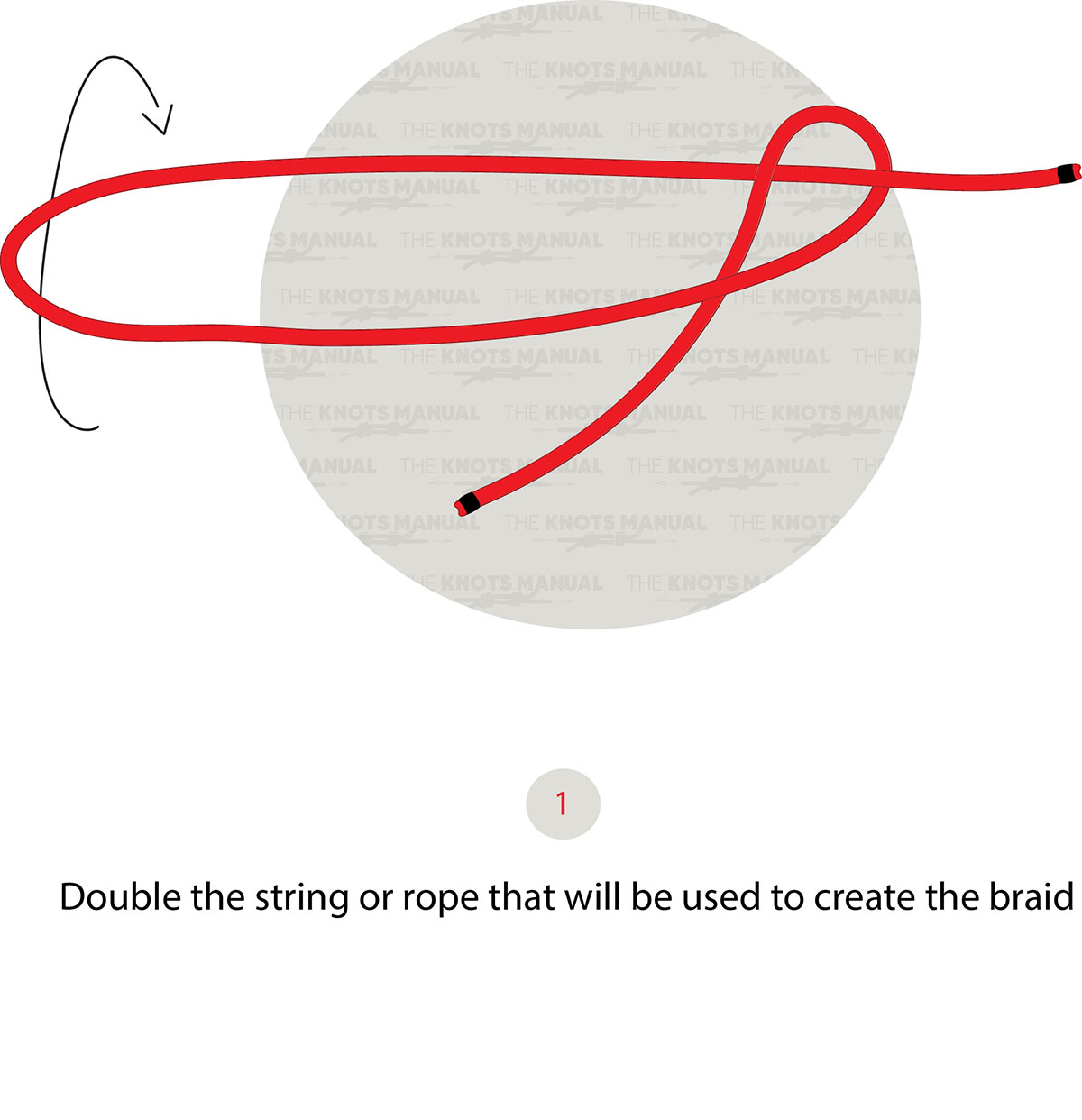
Form a loop by doubling up the string or rope that will be used to create the braid. Twist the loop and thread the tag end through the loop.
Step 1a:
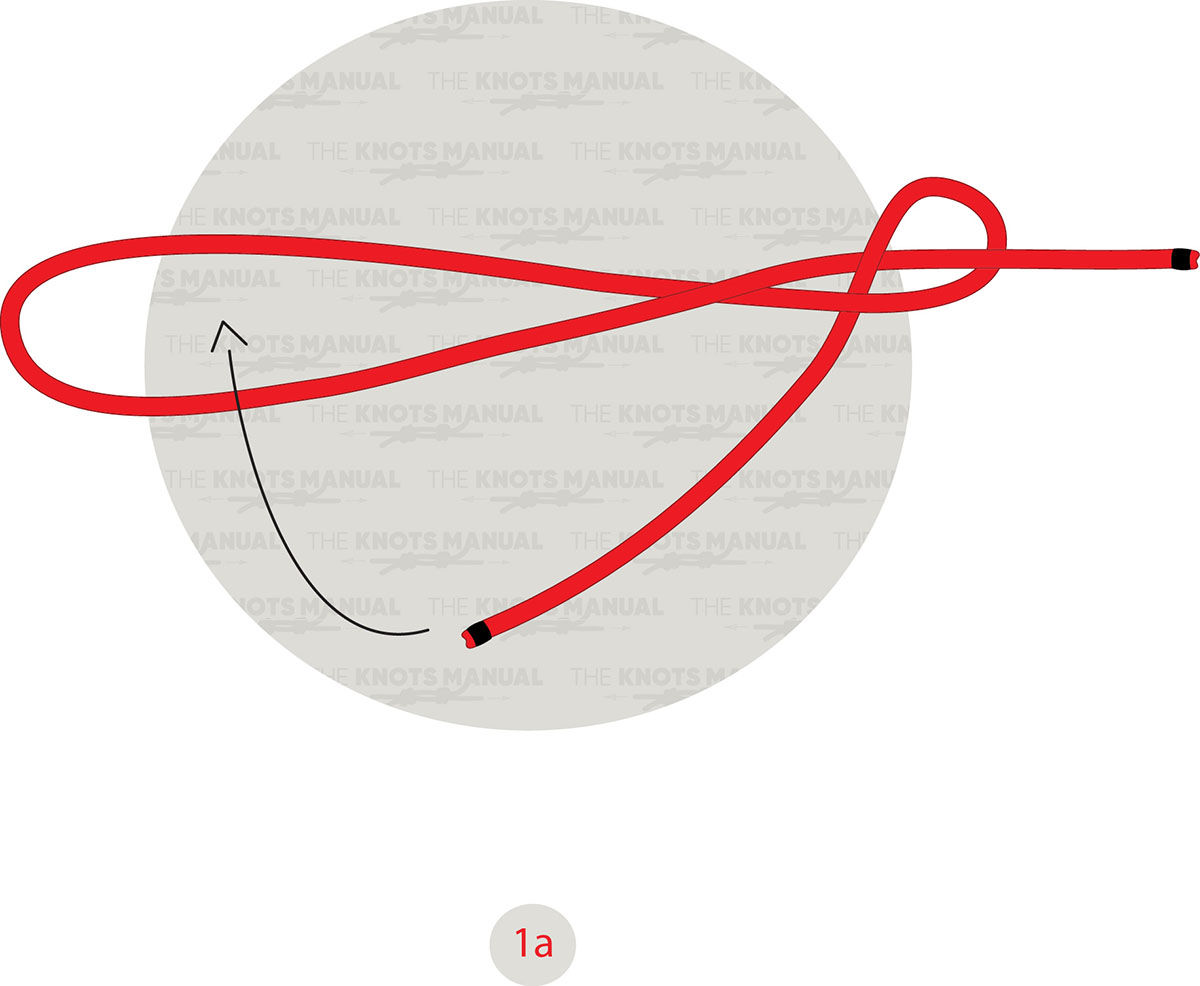
Twist the loop and thread the tag end through the loop.
Step 2:
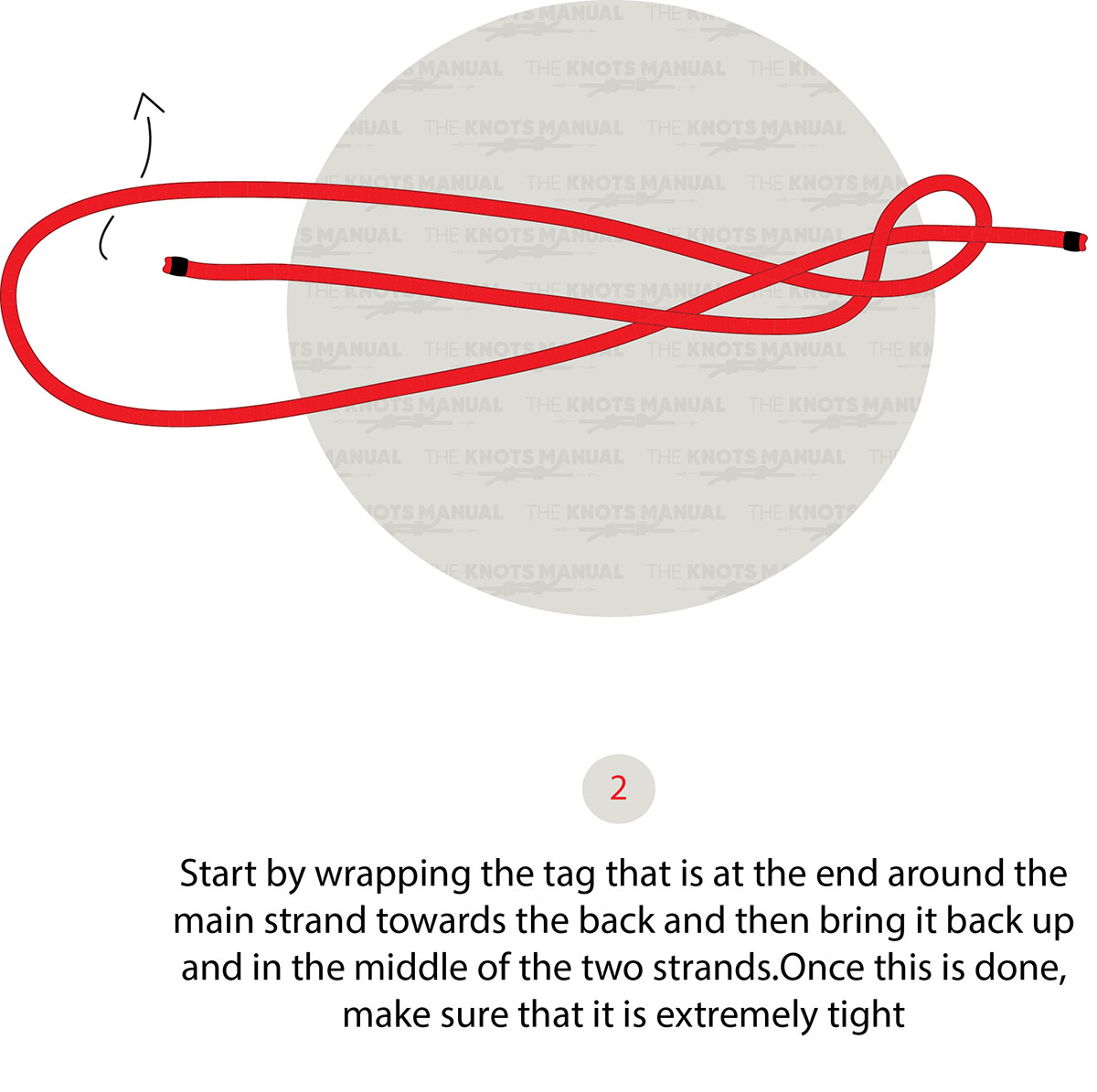
Wrap the tag that is at the end around the main strands toward the back of the braid and bring it back up the middle of the two strands. Make sure it is very tight.
Step 2a:
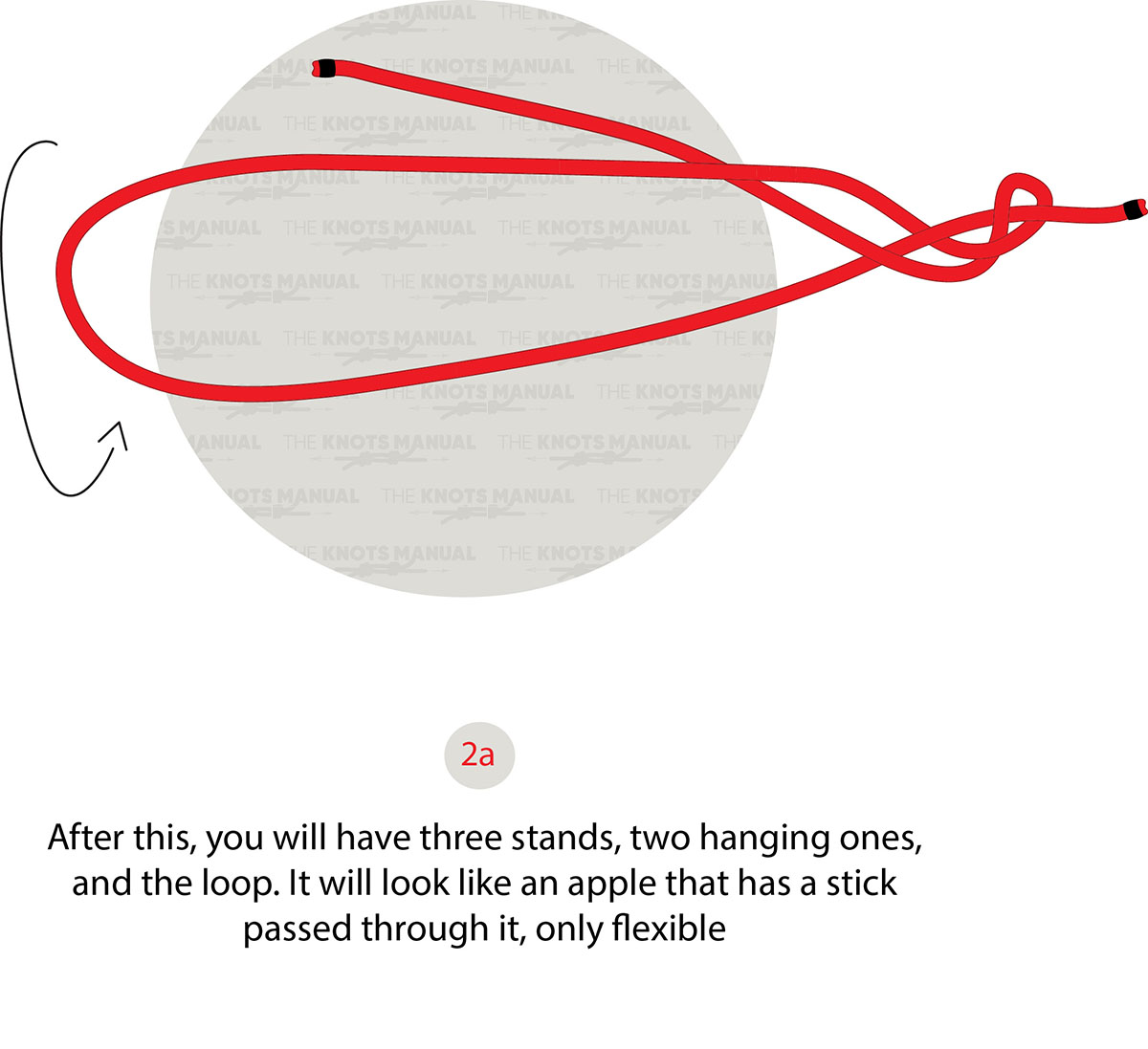
There will be three strands: two hanging tag ends and the loop.
Step 2b:
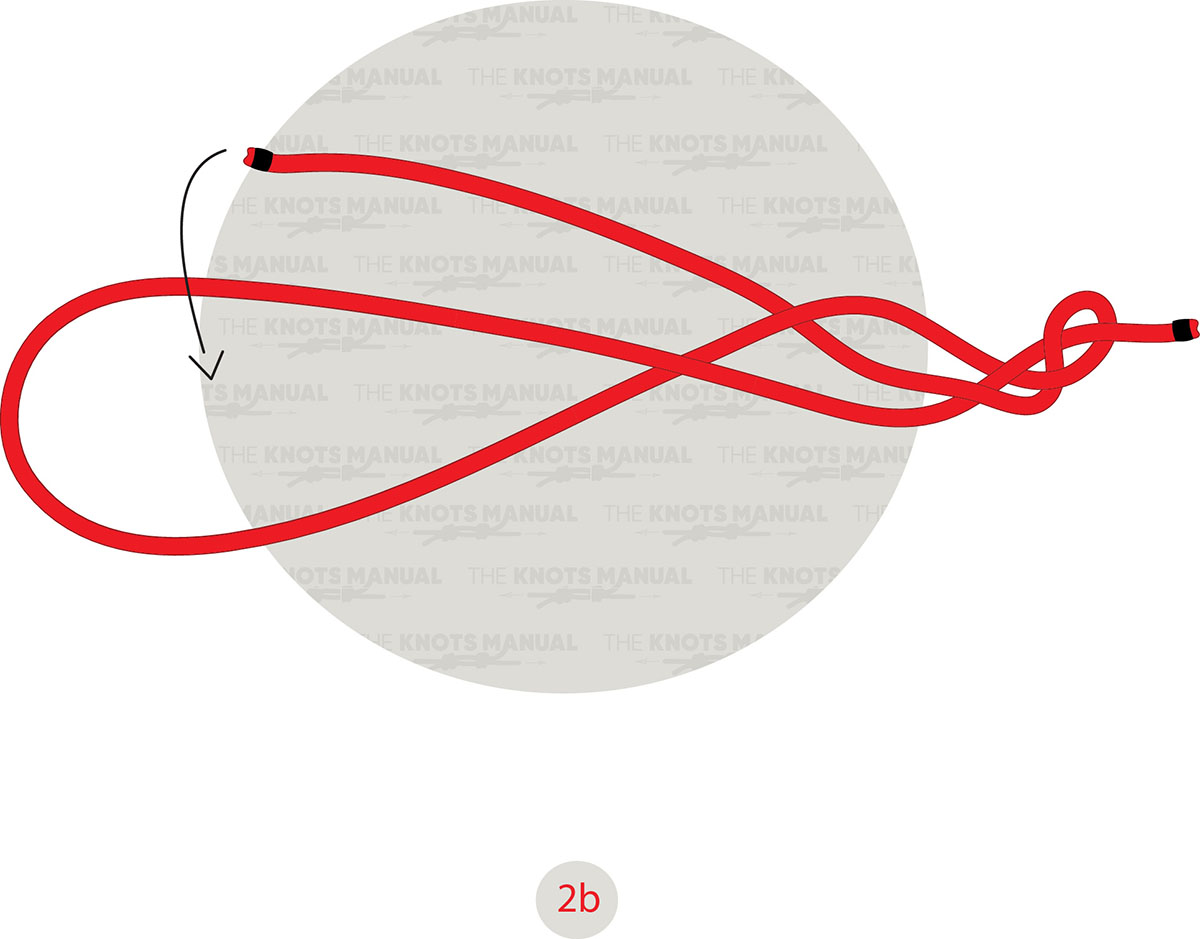
Twist the loop and thread the longest tag end through the loop to braid the two lines together.
Step 3:
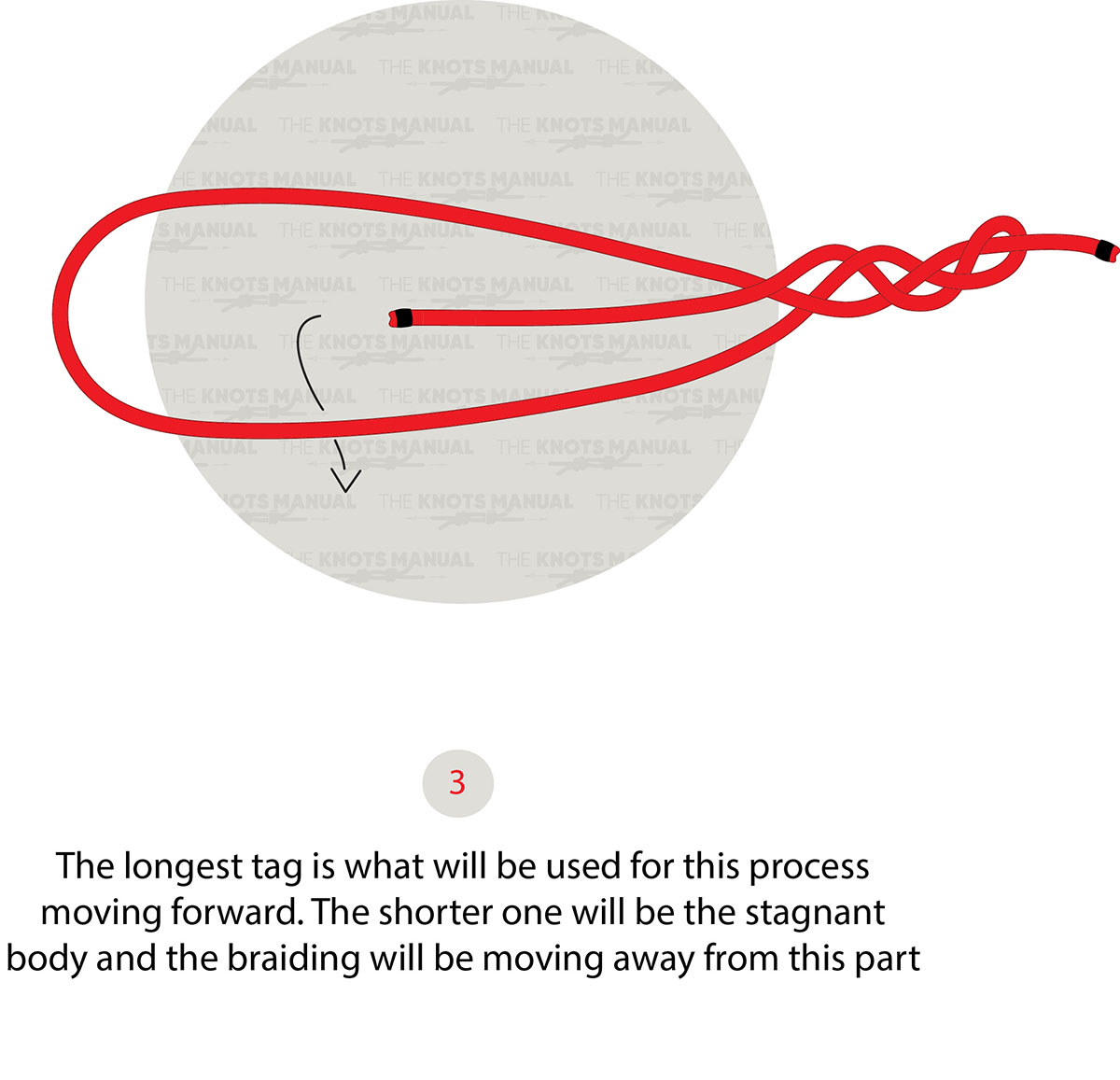
The shorter tag end should remain stagnant as the braid is moving away from it
Step 4:
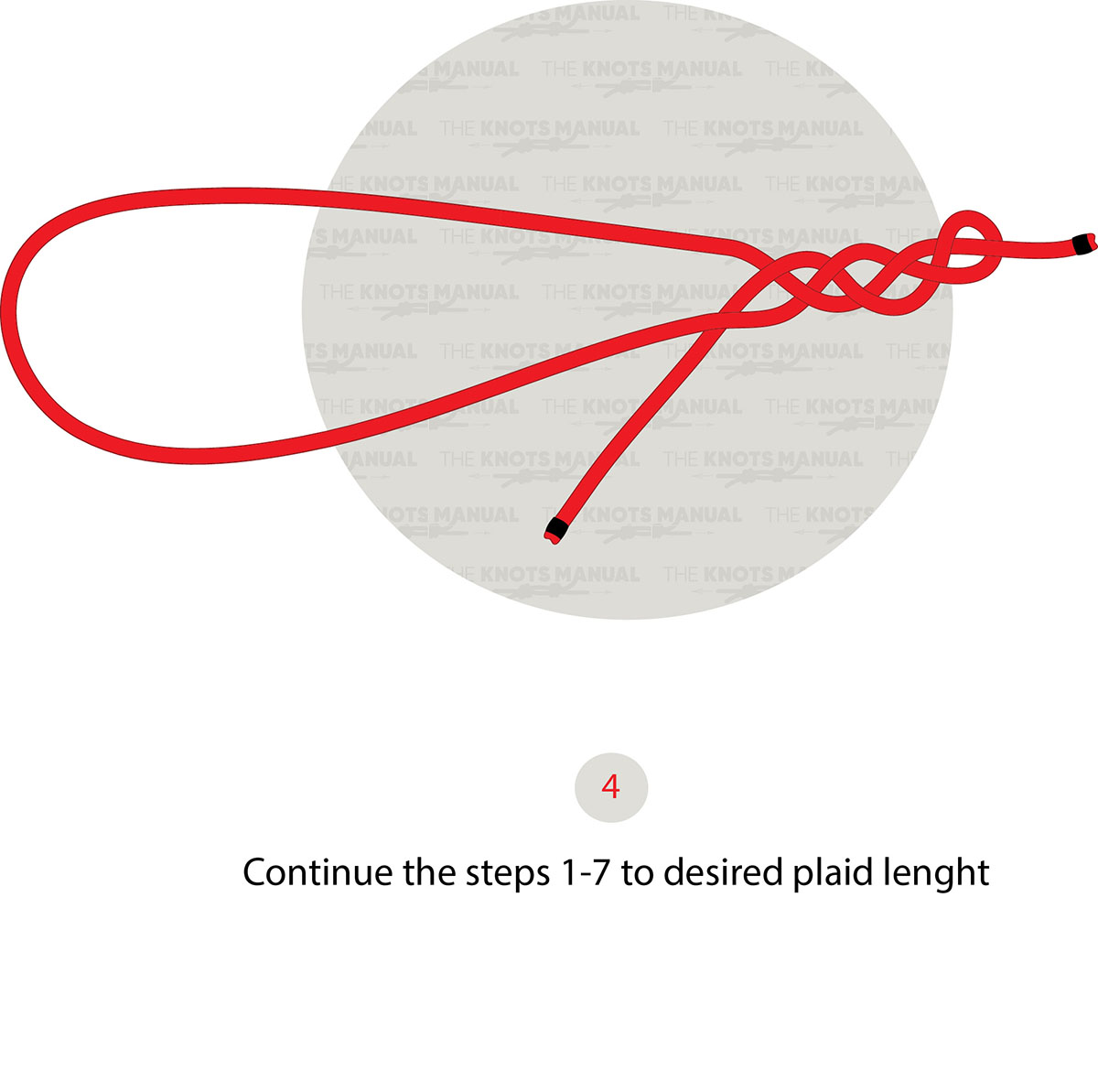
Continue twisting the loop and pushing the long tag end into the loop each time.
Step 5:
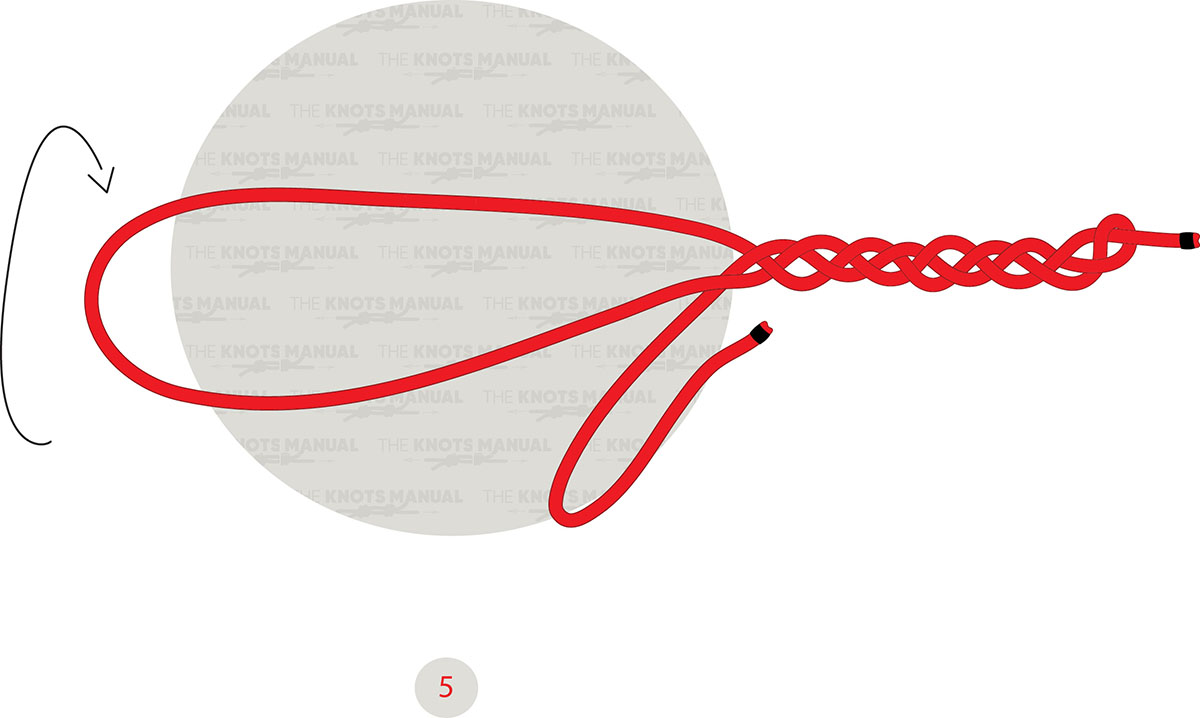
Make sure each twist is even to create a secure braid.
Step 6:
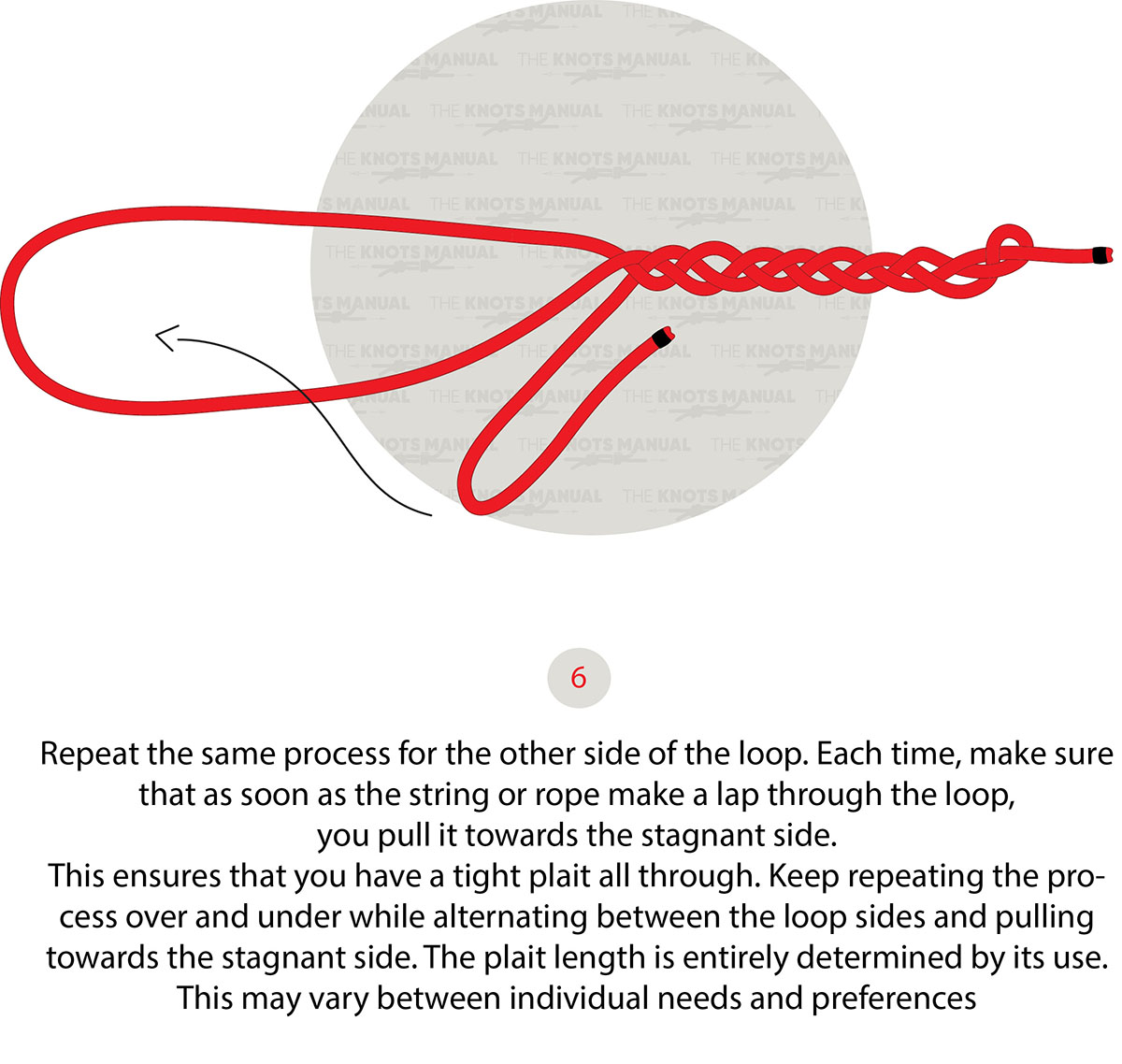
Repeat the process with the other side of the loop. Ensure that each time the string or rope makes a lap through the loop, the stagnant line is pulled tightly. The length of the plait will depend on individual preference and need.
Step 7:
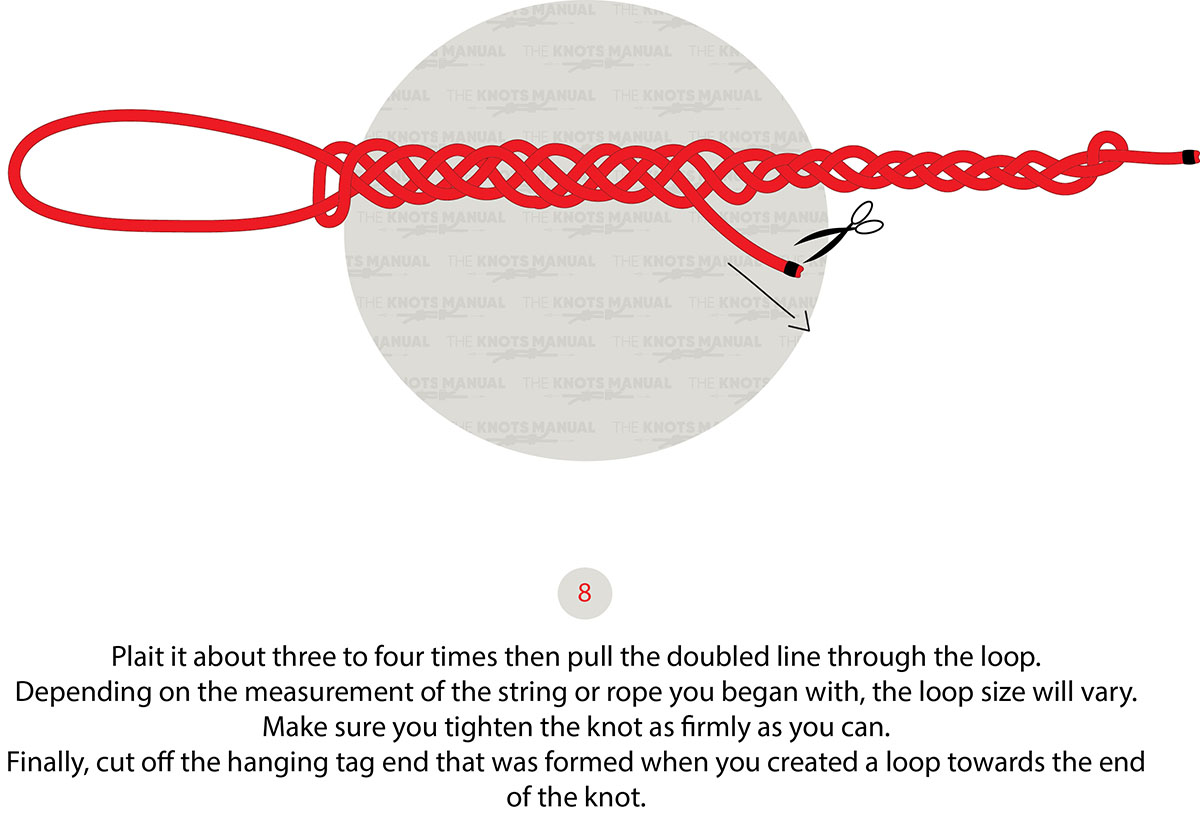
Once the braided section reaches the desired length, pull the doubled line through the loop and secure the knot, by wrapping the loose ends of the lines around the base of the loop several times, pulling them tightly to hold everything in place.
Step 8a:
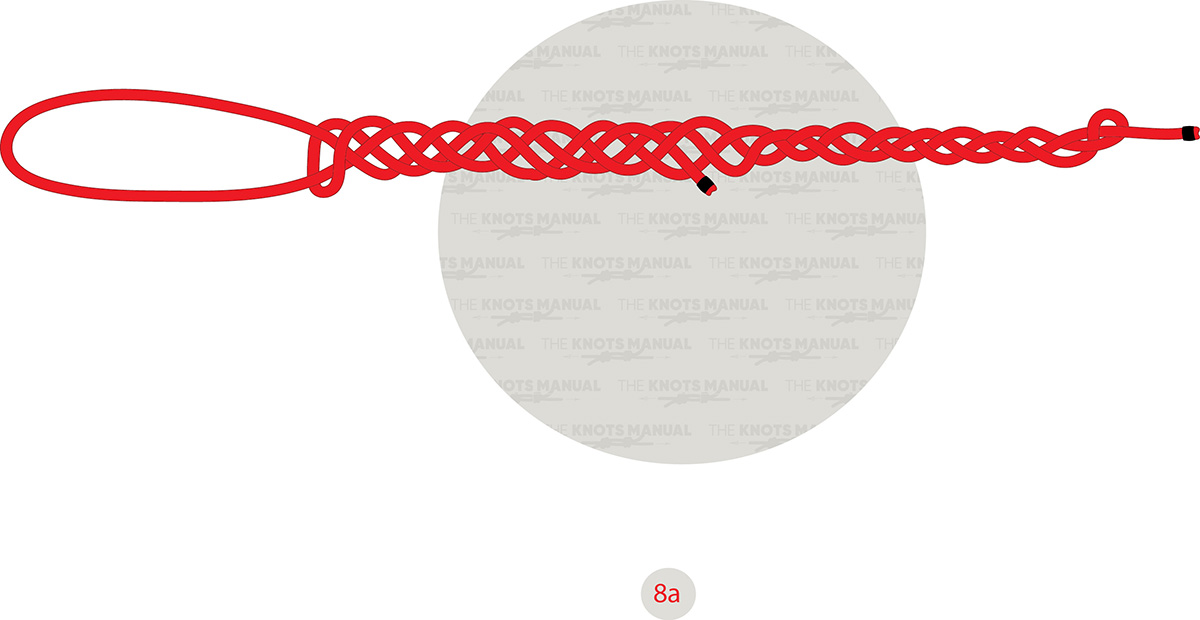
Ensure the knot is snug by pulling firmly on all ends, and trim any excess line for a clean finish.

